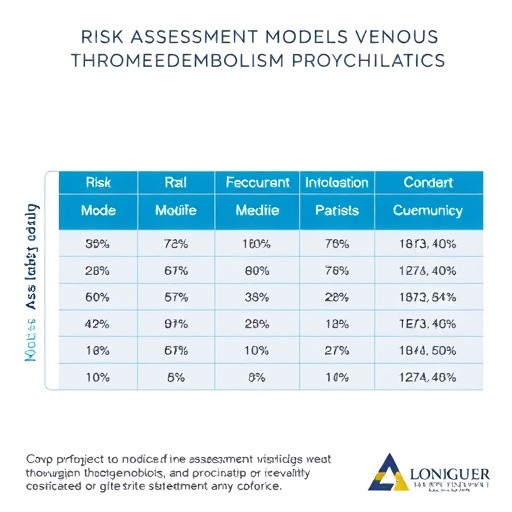In the ever-evolving field of geriatric medicine, the delicate interplay between ethical guidelines and the realities of clinical practice often presents a significant disconnect, particularly concerning treatment limitations and patient participation. Recent research from Sweden sheds light on this pressing issue, revealing that elderly patients frequently find themselves at the intersection of well-intentioned medical ethics and the pragmatic challenges of healthcare delivery. Conducted by researchers including Hessulf, Juhlin-Dannfelt, and Agvall, this cross-sectional study asserts that while medical-ethical guidelines advocate for patient involvement and autonomy, actual adherence to these principles varies considerably in practice.
One of the primary concerns highlighted by the research is the underrepresentation of elderly voices in healthcare decision-making. As many healthcare professionals grapple with the complexities of geriatric patients’ needs, they sometimes fail to adequately engage these patients in discussions about their treatment options. The study suggests that patients, particularly older adults, are often not fully informed about their conditions or the potential implications of treatment limitations. This lack of communication can lead to decisions that may not align with patients’ values or preferences, ultimately undermining the ethical principle of respect for patient autonomy.
Moreover, the findings indicate that healthcare systems may inadvertently perpetuate a culture where treatment limitations are imposed without thorough discussions with patients or their families. This phenomenon raises ethical questions about paternalism in medical practice, where clinicians prioritize clinical judgment over patient participation. Understanding the nuanced needs of elderly patients requires a collaborative approach, where healthcare providers engage them as active partners in their care rather than passive recipients of treatment.
An essential aspect of improving patient participation involves training healthcare professionals to communicate effectively with older patients. The study emphasizes the importance of educating clinicians not only about the ethical frameworks that guide their practice but also about the communication skills necessary to translate these guidelines into meaningful conversations. This is particularly crucial when discussing sensitive topics such as end-of-life care and treatment limitations, where patients may have specific desires and fears that need to be addressed openly.
The research also reveals that there are systemic barriers hindering the alignment of ethical guidelines with clinical practice. Factors such as time constraints during consultations, insufficient resources, and a lack of interdisciplinary collaboration can impede effective communication and patient involvement. For instance, busy clinicians may feel pressured to make quick decisions, sidelining the essential discussions that ensure patients’ wishes are acknowledged. Addressing these systemic challenges requires not only institutional changes but also a cultural shift within healthcare toward prioritizing patient-centered care.
Furthermore, the authors explore how cultural attitudes towards aging and healthcare can impact the treatment of elderly patients. In societies where ageism is prevalent, older adults may be viewed as less deserving of aggressive treatment options or comprehensive care. This mindset can exacerbate the disconnect between ethical guidelines and clinical reality, as healthcare providers may unconsciously internalize these stereotypes, leading to a paternalistic approach in which elderly patients’ autonomy is overlooked.
The implications of these findings are significant, suggesting that reforms are necessary at multiple levels to bridge the gap between ethical guidelines and clinical practice. Policy-makers, healthcare administrators, and educators must collaborate to foster environments that encourage patient participation and respect for autonomy. This can include enhancing training programs, revising care protocols to prioritize patient preferences, and establishing clear communication pathways among healthcare teams.
In terms of clinical practice, the study advocates for a more holistic approach that takes into account the emotional, social, and psychological dimensions of patient care. Geriatric care should extend beyond mere medical treatment to encompass the overall well-being of older adults. By integrating psychosocial support and fostering environments where patients feel safe to express their desires and concerns, healthcare providers can work toward more ethically aligned practices.
As the healthcare landscape continues to evolve, the dialogue surrounding treatment limitations and patient participation must remain at the forefront of geriatric medicine. The research findings underscore the urgent need for a paradigm shift—one that embraces communication, patient-centered care, and an unwavering commitment to ethical principles in the treatment of elderly individuals. This is not merely a clinical issue; it is a societal one that speaks to the values we uphold as we care for our most vulnerable members.
In conclusion, the gap between medical-ethical guidelines and clinical practice regarding treatment limitations and patient participation among elderly individuals poses a significant challenge. To address this, concerted efforts are needed to enhance communication, educate healthcare providers, and create a more inclusive environment for patient involvement in care decisions. Only through such measures can we strive to align clinical practice with the ethical principles that guide us, ultimately leading to better health outcomes and greater satisfaction for elderly patients.
Subject of Research: Geriatric medicine, ethical guidelines, patient participation
Article Title: Treatment limitations and participation in elderly patients – the gap between medical-ethical guidelines and clinical practice: a cross sectional-study from Sweden.
Article References:
Hessulf, F., Juhlin-Dannfelt, M., Agvall, B. et al. Treatment limitations and participation in elderly patients – the gap between medical-ethical guidelines and clinical practice: a cross sectional-study from Sweden.
BMC Geriatr 25, 841 (2025). https://doi.org/10.1186/s12877-025-06552-x
Image Credits: AI Generated
DOI: https://doi.org/10.1186/s12877-025-06552-x
Keywords: Geriatric medicine, patient participation, ethical guidelines, communication, healthcare reform.
Tags: challenges in geriatric healthcare deliveryclinical practice vs. ethical guidelinescommunication in healthcare decision-makingelderly care ethicselderly patient participationethical principles in healthcarehealthcare professionals and elderly patientspatient autonomy in geriatric medicinepatient values and healthcare decisionsSweden geriatric studytreatment limitations in elderly careunderrepresentation of elderly voices





